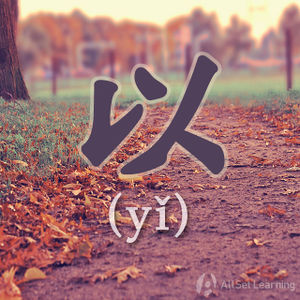Difference between revisions of "Cause and effect with "yinwei" and "suoyi""
| Line 1: | Line 1: | ||
{{Grammar Box}} | {{Grammar Box}} | ||
| + | |||
| + | You will often come across “因为 ... 所以 ..." in written Chinese as well as spoken Chinese. Better get used to it! | ||
== Structure == | == Structure == | ||
Revision as of 07:17, 21 February 2013
-
Level
-
Similar to
- Expressing "as a result" with "jieguo" (B1)
- Expressing "then…" with "name" (B1)
- Expressing "since" with "jiran" (B2)
- Expressing "therefore" with "yinci" (B2)
- Stating the effect before the cause (B2)
- Express an action and its effect by using "tongguo… shi" (C1)
- Using "because" with "er" to indicate effect (C1)
-
Used for
-
Keywords
You will often come across “因为 ... 所以 ..." in written Chinese as well as spoken Chinese. Better get used to it!
Structure
"因为 ... 所以 ..." (yīnwéi ... suóyǐ ...) are used to indicate cause and effect.
因为 + Cause + 所以 + Effect
This expresses that because of cause, therefore there is a result.
Examples
- 因为 老板 不 在 这里,所以 我 给 他 打 电话。
- 因为 去 北京 学习 中文 了,所以 你 现在 说 中文 很 流利。
- 因为 天气 太 热,所以 我 要 喝 冰 可乐。
See also
- Explaining results with "suoyi"
- Stating the Effect before the Cause (advanced article)
Sources and further reading
Books
- Modern Mandarin Chinese Grammar: A Practical Guide (pp. 272-4) →buy
- Basic Patterns of Chinese Grammar (pp. 79) →buy



